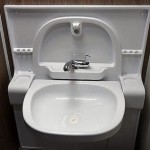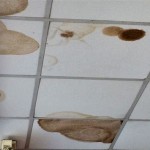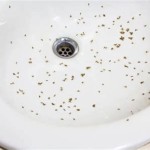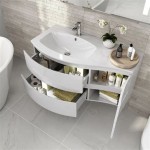DIY Bathroom Vanity with Vessel Sink: A Comprehensive Guide
Creating a custom bathroom vanity can be a rewarding project, offering the opportunity to personalize the space with a unique and functional design. Integrating a vessel sink adds a touch of modern elegance and allows for greater design flexibility. This guide provides a detailed overview of the process, from planning and material selection to construction and installation, for building a DIY bathroom vanity with a vessel sink.
Planning and Design Considerations
Before embarking on the construction process, meticulous planning is crucial. This involves assessing the available space, determining the desired dimensions of the vanity, and selecting the appropriate materials and vessel sink. Careful consideration of plumbing requirements is also paramount.
Space Assessment: The initial step is to accurately measure the area where the vanity will be installed. Consider the width, depth, and height limitations, paying attention to any obstructions such as pipes or electrical outlets. Account for door swings and ensure adequate clearance for comfortable movement within the bathroom.
Vanity Dimensions: The dimensions of the vanity should be proportional to the size of the bathroom. A vanity that is too large can overwhelm a small space, while a vanity that is too small may not provide sufficient storage or counter space. Standard vanity heights typically range from 30 to 36 inches. Consider the user's height and preferences when determining the optimal height for the vanity.
Material Selection: The choice of materials will significantly impact the aesthetics, durability, and cost of the vanity. Common materials include solid wood, plywood, MDF (Medium-Density Fiberboard), and reclaimed wood. Solid wood is known for its strength and beauty but can be more expensive and prone to warping in humid environments. Plywood is a cost-effective and stable alternative, while MDF provides a smooth surface for painting. Reclaimed wood offers a rustic and eco-friendly option.
Vessel Sink Selection: Vessel sinks are available in a wide variety of shapes, sizes, and materials, including ceramic, glass, stone, and metal. Consider the overall style of the bathroom and choose a vessel sink that complements the existing décor. The size of the vessel sink should be appropriate for the size of the vanity. Note the dimensions and specific installation requirements of the chosen vessel sink, as this will influence the design and construction of the vanity top.
Plumbing Considerations: Vessel sinks typically require a longer faucet and a drain without an overflow. Plan the plumbing layout carefully, ensuring that the drainpipe aligns with the existing plumbing and that the faucet has sufficient reach over the sink. Determine the faucet hole configuration required by the chosen faucet. If the faucet will be mounted directly on the vanity top, ensure that the top is thick enough to accommodate the faucet base.
Design Software and Sketches: Utilize design software or create detailed sketches to visualize the final product. This can help identify potential design flaws and ensure that the vanity meets the user's needs and aesthetic preferences. Include measurements for all components, including the cabinet frame, doors, drawers, and countertop.
Construction Process: Building the Vanity
The construction process involves building the vanity frame, adding storage elements such as drawers and shelves, and creating the countertop. Accuracy and attention to detail are essential for achieving a professional and durable result.
Building the Frame: The vanity frame provides the structural support for the entire unit. Construct the frame from solid wood or plywood, using joinery techniques such as screws, pocket screws, or dowels. Ensure that the frame is square and level before proceeding to the next step. Reinforce the corners with wood glue for added strength.
Adding Storage Elements: Incorporate drawers, shelves, or a combination of both to maximize storage space. Measure the inside dimensions of the vanity frame and cut the drawer boxes and shelves accordingly. Use drawer slides to ensure smooth drawer operation. Consider adding dividers or organizers to the drawers to improve storage efficiency.
Creating the Countertop: The countertop can be constructed from a variety of materials, including solid wood, butcher block, concrete, or stone. The choice of material will depend on the desired aesthetic and budget. If using solid wood or butcher block, apply a protective finish to prevent water damage. For concrete countertops, ensure proper sealing to prevent staining. Cut a hole in the countertop to accommodate the vessel sink drain, following the manufacturer's instructions.
Door and Drawer Fronts: Build door and drawer fronts from the chosen material, ensuring that they fit snugly within the vanity frame. Use hinges to attach the doors and install knobs or pulls for easy operation. Consider using soft-close hinges to prevent slamming. Pre-drill holes for hardware to avoid splitting the wood.
Finishing: Sand all surfaces smooth and apply a stain, paint, or clear coat to protect the wood and enhance its appearance. Choose a finish that is water-resistant and durable. Apply multiple coats of finish, allowing each coat to dry completely before applying the next. Consider using a primer before painting to improve adhesion and prevent bleed-through.
Assembly: Assemble the various components of the vanity, ensuring that all screws are tightened securely. Attach the countertop to the frame using screws or adhesive. Install the door and drawer fronts, adjusting the hinges and drawer slides as needed to ensure smooth operation.
Installation of the Vanity and Vessel Sink
Proper installation is crucial for ensuring the stability and functionality of the vanity and vessel sink. This involves securing the vanity to the wall, connecting the plumbing, and sealing the vessel sink to the countertop.
Securing the Vanity: Locate the wall studs and mark their positions on the back of the vanity. Use screws to attach the vanity to the wall studs, ensuring that it is level and plumb. If wall studs are not readily accessible, use wall anchors to provide additional support. Ensure the vanity is securely fastened to prevent movement or instability.
Plumbing Connections: Connect the drainpipe from the vessel sink to the existing plumbing, ensuring a tight and leak-proof connection. Install the faucet, following the manufacturer's instructions. Connect the water supply lines to the faucet, ensuring that the hot and cold water lines are connected properly. Test all plumbing connections for leaks and tighten as needed.
Vessel Sink Installation: Clean the underside of the vessel sink and the countertop surface where the sink will be mounted. Apply a bead of silicone sealant around the drain hole on the countertop. Carefully position the vessel sink over the drain hole and press down firmly to create a watertight seal. Allow the sealant to cure completely before using the sink. Wipe away any excess sealant with a damp cloth.
Final Adjustments and Sealing: Inspect the vanity and vessel sink for any imperfections or areas that require adjustment. Tighten any loose screws or fittings. Apply a bead of caulk along the edges of the vanity where it meets the wall to prevent water from seeping behind the unit. Clean the entire vanity and countertop with a mild detergent and water.
Addressing Potential Challenges: Building a DIY bathroom vanity with a vessel sink can present several challenges. Uneven floors or walls may require shimming to ensure that the vanity is level. Plumbing configurations may require modifications to existing pipes. Securing the vanity to the wall may require specialized hardware or techniques, depending on the type of wall. Addressing these challenges proactively will help ensure a successful outcome.
By following these steps and paying close attention to detail, anyone can create a custom bathroom vanity with a vessel sink that enhances the functionality and aesthetic appeal of their bathroom.

Rustic Bathroom Vanity Kreg Tool

10 Diy Bathroom Vanity Ideas The Family Handyman

Diy Rustic Bathroom Vanity Sammy On State

Homemade Powder Room Vanity With Vessel Sink Wholesteading Com

10 Diy Bathroom Vanity Ideas The Family Handyman

16 Ingenious S Diy Bathroom Vanity Inexpensive

How To Turn A Cabinet Into Bathroom Vanity Diy

Diy Bathroom Vanity For 65 Angela Marie Made

Diy Dresser Vanity With Vessel Sink Bathroom

Rustic Bathroom Vanity Kreg Tool
Related Posts







